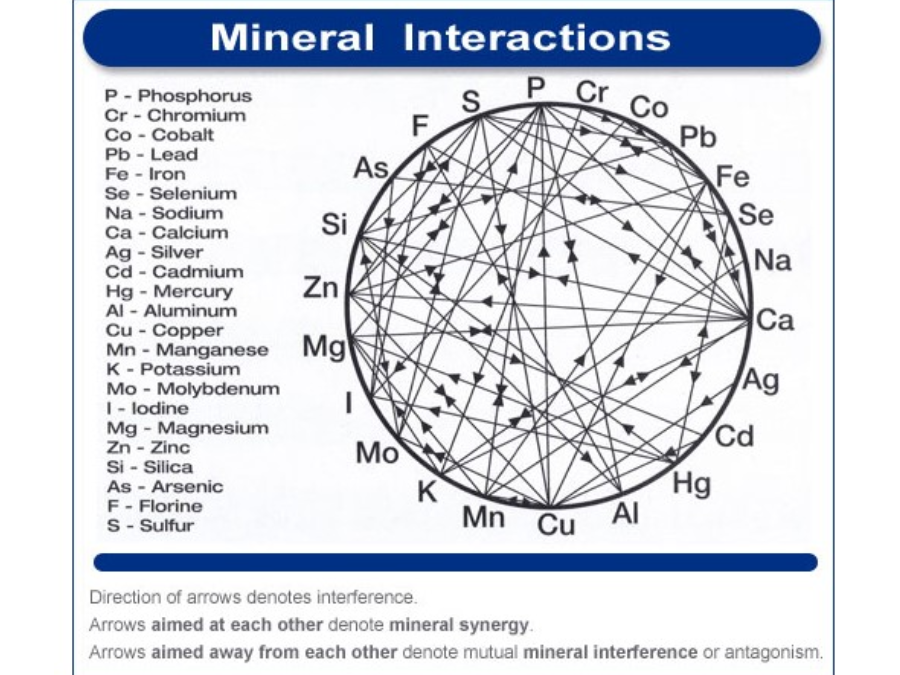While this topic has been written at least 100 times, it’s that time of year to write about it again. Yep, you guessed it, grass tetany (or grass staggers). While researching for this article, I reached out to a cattleman, a beef nutritionist, and a veterinarian to get more information from those with firsthand experience dealing with grass tetany. From the conversations with each individual, it seems that grass tetany is actually rare. For example, Dr. Tom Roskos is a large animal vet in Wisconsin. From his 40 years of experience, he’s seen roughly a dozen cases of grass tetany on a whole herd basis. All of this is surprising considering the number of articles and sources written specifically on grass tetany. So, jumping on the bandwagon here’s more information on what magnesium does in the body and grass tetany.
What is Grass Tetany?
As a reminder, grass tetany is when a ruminant (cow, sheep, or goat) has low magnesium in its body (hypomagnesemia). This happens because there is not enough magnesium in the diet due to the high potassium intake found in lush green forages in the early spring. The high potassium levels block magnesium absorption. Magnesium is absorbed in the rumen, meaning the magnesium in the feed is directly absorbed for use in the body. Magnesium is needed in various metabolic processes. However, stored magnesium is difficult for the animal to use because it is in the bones and teeth, which makes it difficult to mobilize. This is why it’s important to offer a high magnesium mineral in your mineral program in early spring.
What does magnesium do?
Magnesium is important for nerve and muscle function. So not enough magnesium causes an animal to lose control of muscles, most notably the neck muscles. Signs of grass tetany are restlessness, nervousness, decreased feed intake, muscle spasms, convulsions, and difficulty breathing. Livestock suffering from grass tetany are unable to move their neck when down and have rapid eye movement. Livestock that died from grass tetany show signs of thrashing before death.
Who is most susceptible?
Early lactation cows, sheep, and goats. This is because of the loss of magnesium in milk during lactation. Stocker cattle have little to no risk of grass tetany.
When to worry about Grass Tetany?
Grass tetany is most common when grazing fast-growing pastures, typically in late winter and early spring when forages are growing quickly. Young, lush grasses after a lot of moisture (rain or snow) have less magnesium availability. There is also a higher concern for grass tetany when grazing small grains and fescue. Immature plants have less available magnesium. So, try to avoid grazing new grasses until they’re 4-6 in tall. When the conditions are right, grass tetany can happen a lot more. The Midwest has the type of springs where there’s a lot of moisture and in the cool season, grasses shoot up, increasing chances for grass tetany.
How do we prevent it?
There are a few ways. 1) By offering more magnesium in the diet in the form of a high magnesium mineral like Vigortone’s 3V5SMG during early spring grazing. 2) Legumes are naturally higher in magnesium compared to grasses, so adding alfalfa and clovers to your pasture mix would be beneficial. 3) Avoid grazing until grasses are 4-6 inches tall. Younger plants have higher levels of potassium and less magnesium available. The combination will lead to less circulating magnesium for the animal. 4) Pastures that are overfertilized with nitrogen and potassium will lead to a decrease in the plant’s available magnesium. High potassium and nitrogen decrease magnesium absorption and/or utilization. The mineral wheel is a chart that shows how all the different minerals an animal needs are related to each other. Some minerals have synergistic relationships (they work together), and some have antagonistic relationships (work against each other). For example, potassium and magnesium have an antagonistic relationship meaning too much potassium in the diet will limit magnesium. Grass tetany is more likely to occur when grazing pastures that are over-fertilized with nitrogen and potassium because they reduce the plant’s magnesium availability to the animal.
Circling back to how surprising it was to hear that grass tetany is not very common. It makes me wonder why. Is it because we do such a good job at offering a high magnesium mineral when needed? Or are the pastures fertilized just so that magnesium is always available? Or are the growing conditions in the southeast not conducive for grass tetany? I’m not sure but put out a high magnesium mineral just to be safe.
Sources:
“Preventing Grass Tetany in the Lactating Beef Cow This Spring”. UNL Beef. Accessed 9 Mar. 2023.
Arnold, Michelle & Lehmkuhler, Jeff. “Grass Tetany/ Hypomagnesemia – Start Preventative Measures Now” www.feedlotmagazine.com. Accessed 9 Mar. 2023.
National Academies Of Sciences, Engineering, And Medicine (U.S.). Committee On Nutrient Requirements Of Beef Cattle. (2016). Nutrient Requirements of Beef Cattle. Washington, Dc: National Academies Press.
Photo from:

